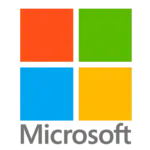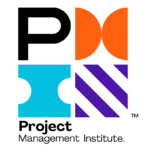Front-end development offers lucrative career paths, whether you choose to work full-
time or freelance. As a front-end developer, you have the opportunity to visually impact the brands you work with. There are numerous courses available for both novices and experienced practitioners.
Introduction
Developing a website is a fascinating prospect that captures the interest of both experienced developers and beginners who have no prior knowledge of website building.
Web development is a highly sought-after profession that offers lucrative job
opportunities around the world, As the demand for developers continues to rise, it has become one of the most in-demand and highest-paying jobs in the market.
Tips for choosing the right course
Start with the basics. Before you can start building complex websites, you need to have a solid understanding of the basics of HTML, CSS, and JavaScript. There are many great online tutorials and courses that can teach you these basics.
Choose a course that fits your learning style. There are many different types of front-end web development courses available, so it’s important to choose one that fits your learning style. If you prefer to learn by reading, look for a course that comes with a comprehensive textbook. If you prefer to learn by watching videos, look for a course that includes video lectures.
Get hands-on experience. The best way to learn front-end web development is by doing it. Once you have a basic understanding of the basics, start building your own websites. There are many great resources available to help you get started, such as Code Pen and GitHub.
Network with other developers. One of the best ways to learn and grow as a front-end web developer is to network with other developers. There are many online forums and communities where you can connect with other developers and share ideas.
Stay up-to-date with the latest trends. The web development landscape is constantly changing, so it’s important to stay up-to-date with the latest trends. Read blogs, attend conferences, and follow other developers on social media to stay ahead of the curve.
By following these tips, you can set yourself up for success in a career in front-end web development.
Here are a few of the most popular front-end web development courses:
- The Odin Project is a free, open-source curriculum that teaches you everything you need to know to become a front-end web developer.
- FreeCodeCamp is another free, open-source curriculum that teaches you front-end web development skills.
- Udemy offers a variety of paid front-end web development courses, including JavaScript: The Complete Guide (2022) by Jonas Schmedtmann and HTML5 & CSS3: Complete Course by Jonas Schmedtmann.
- Codecademy offers a variety of interactive, gamified courses that teach you front- end web development skills.
- Frontend Masters offers a variety of high-quality, in-depth courses taught by experienced developers.
Once you have chosen a course and started learning the basics, it’s time to start building your portfolio. A portfolio is a collection of your work that you can show potential employers to demonstrate your skills. When building your portfolio, make sure to include a variety of projects that showcase your skills in different areas, such as design, development, and interactivity.
Finally, don’t forget to network with other developers. One of the best ways to learn and grow as a front-end web developer is to connect with other developers and share ideas. There are many online forums and communities where you can connect with other developers, such as Stack Overflow and Dev.to.
By following these tips, you can set yourself up for success in a career in front-end web development.
Front-End Developer Skills
Front-end developers require various skills to create engaging user interfaces and ensure the functionality of web applications. These skills include:
HTML: The ability to write clear and concise HTML code is essential for front-end developers to create the structure and content of web pages.
CSS: Knowledge of CSS is vital for front-end developers to design and style web pages, creating visually appealing and user-friendly interfaces.
JavaScript: Proficiency in JavaScript is crucial for front-end developers to create interactive and dynamic web pages, and to handle client-side scripting.
DOM Manipulation: Front-end developers must be skilled in manipulating the Document Object Model (DOM) to dynamically change the content and style of web pages.
Problem-Solving Ability: Strong problem-solving skills are critical for front-end
developers to identify and resolve issues that may arise during the development process, and to ensure the smooth functioning of web applications.
Apart from these core technical skills, front-end developers should also possess good design sense, attention to detail, and the ability to collaborate effectively with other developers, designers, and stakeholders.
Roles and duties of front-end developers
A front-end developer steps
Choose a web page’s structure and design.
Create features that will improve the user experience
achieving harmony between practical and aesthetically pleasing design. Make sure the website is mobile-friendly.
Create reusable code for upcoming uses.
Make ensuring that websites are scaled and optimized for speed. Use a variety of markup languages to create web pages.
Maintain the brand identity across the entire design.
Types of Developers
A Front-End Developer is responsible for the user interface (UI) of an application. They handle the client side of the application and use front-end technologies to build the complete UI that users interact with.
A Back-End Developer is responsible for building mechanisms and managing data in an application. They handle the server-side implementation of the website, which includes data storage, security, and communication with the UI for data transfer.
A Full-Stack Developer is responsible for both the client-side and server-side
implementation of a website. They manage the UI, handle data, and ensure the security of the application. In other words, they have a comprehensive understanding of both front- end and back-end technologies, making them capable of developing and maintaining a complete web application.
Salary of a front-end developer
Junior front-end developers typically make around $49,000 a year, but that is hardly surprising given the fact that they require less experience and fewer duties.
A front-end developer in the United States may make an average of $86,178 annually, according to Glassdoor. Pay scale estimates that a “regular” front-end developer can make an annual salary of $71,350.
Conclusion
A front-end developer is responsible for creating engaging websites using their tech skills. Therefore, it is essential to understand how to become a front-end developer. By
thoroughly following the above-mentioned points, one can become a successful front-end developer.
[su_posts template=”templates/teaser-loop.php” posts_per_page=”4″]
























